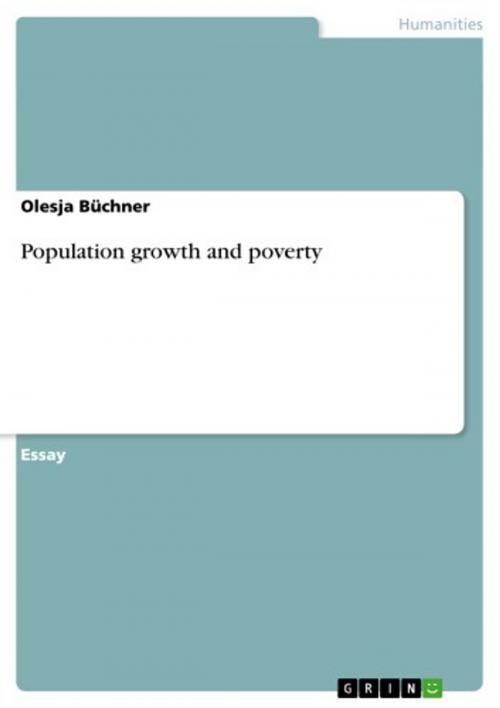| Author: | Olesja Büchner | ISBN: | 9783638255585 |
| Publisher: | GRIN Publishing | Publication: | February 21, 2004 |
| Imprint: | GRIN Publishing | Language: | English |
| Author: | Olesja Büchner |
| ISBN: | 9783638255585 |
| Publisher: | GRIN Publishing |
| Publication: | February 21, 2004 |
| Imprint: | GRIN Publishing |
| Language: | English |
Essay from the year 2003 in the subject Sociology - Basics and General, grade: distinction, La Trobe University Melbourne (Sociology), course: Development, Globalization and Culture, 23 entries in the bibliography, language: English, abstract: In 2001 the UN had revised its past world population growth prognoses. Already in 2043 and not in 2052, nine billion people will live on earth. (Coiplet, 2001, Homepage). These prognoses are based on the fact that since 1960 the population of the world are more than doubled. In this rapid growth many positive developments are reflected, which improved the life circumstances of many people considerably. Thus the number of child deaths sank drastically worldwide. The life expectancy of 48 years in 1955 has risen to 65 years in 2000. People are on the average healthier and better nourished than ever before. The part of people, who suffer on chronic malnutrition in developing countries, sank in this period from approximately forty to twenty per cent. (DSW, 2001a, Homepage) Simultaneously the natural resources have changed dramatically. Water and air pollution increase as well as the overuse of farmland and the global warming. Besides the world population development creates new social areas of conflict (migration and refugee movements, poverty, etc.), as well as new political and economical conflicts (resource wars, risen gab between poverty and wealth, etc.). This essay examines the development of the world population, their effects on the poverty and malnutrition, the causes of the population explosion and the present national and international activities and projects to contain this problem. [...]
Essay from the year 2003 in the subject Sociology - Basics and General, grade: distinction, La Trobe University Melbourne (Sociology), course: Development, Globalization and Culture, 23 entries in the bibliography, language: English, abstract: In 2001 the UN had revised its past world population growth prognoses. Already in 2043 and not in 2052, nine billion people will live on earth. (Coiplet, 2001, Homepage). These prognoses are based on the fact that since 1960 the population of the world are more than doubled. In this rapid growth many positive developments are reflected, which improved the life circumstances of many people considerably. Thus the number of child deaths sank drastically worldwide. The life expectancy of 48 years in 1955 has risen to 65 years in 2000. People are on the average healthier and better nourished than ever before. The part of people, who suffer on chronic malnutrition in developing countries, sank in this period from approximately forty to twenty per cent. (DSW, 2001a, Homepage) Simultaneously the natural resources have changed dramatically. Water and air pollution increase as well as the overuse of farmland and the global warming. Besides the world population development creates new social areas of conflict (migration and refugee movements, poverty, etc.), as well as new political and economical conflicts (resource wars, risen gab between poverty and wealth, etc.). This essay examines the development of the world population, their effects on the poverty and malnutrition, the causes of the population explosion and the present national and international activities and projects to contain this problem. [...]















